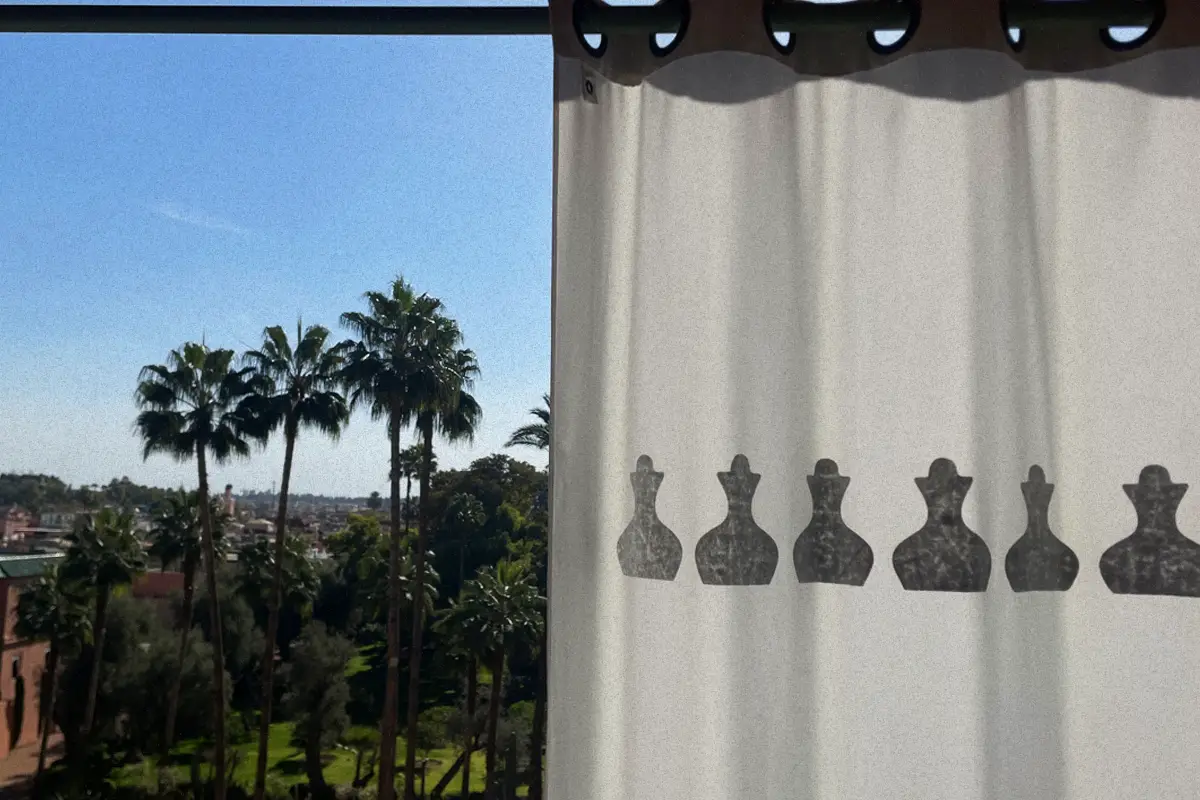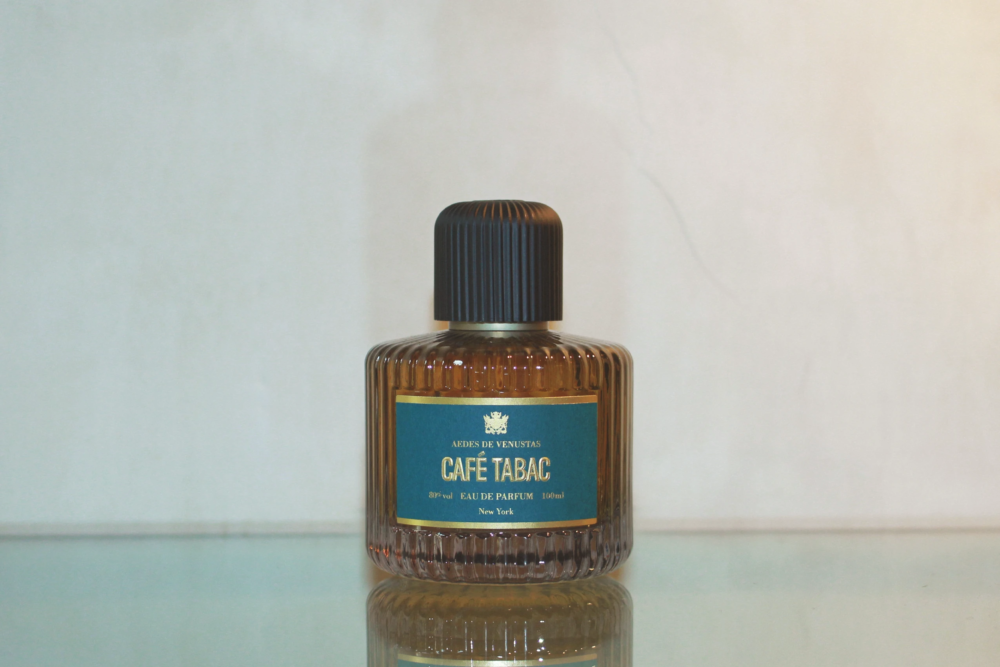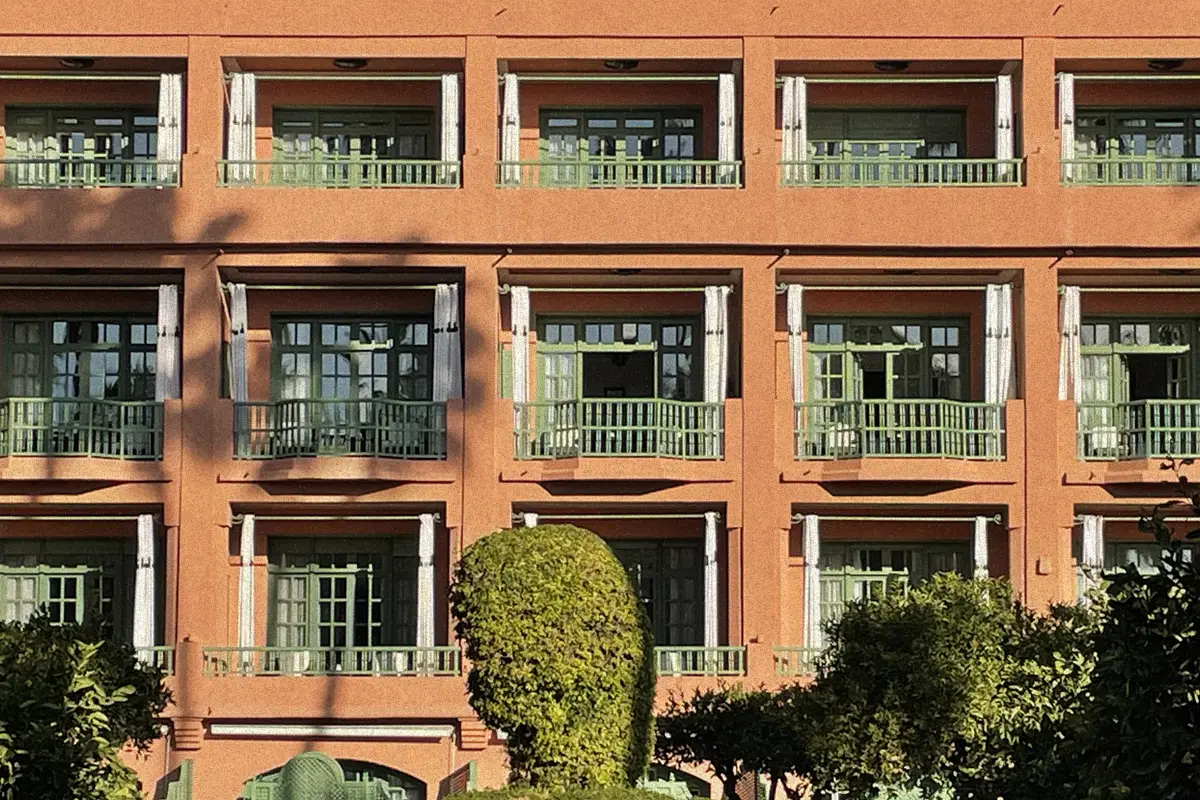
La Mamounia, Marrakech since 1923: the ancient Arsat Garden
La Mamounia, Marrakech, review: The Arsat gardens and the N’zaha, a picnic ritual where the happy few reunited to eat Tanjia, drink tea and sing Marrakshi songs
One hundred years of activity: La Mamounia, Marrakech
La Mamounia could be considered a literary topic, one of the best hotels in the world – more than one hundred years of activity. So many praises. It is surrounded and protected by high walls – like a forbidden ancient city.
La Mamounia belongs to the kind of hotel that fills the dreams of the well-to-do classes: 209 rooms, many of them suites, over four floors of a building. From the balcony, the view of the garden changes your perception. In the morning, the sun rises behind the Atlas Mountains and the sunset illuminates them. There is a strange effect: the peaks blend with the clouds. When you arrive, you don’t notice it immediately. As if they were chameleon angels leaping through the skies to escape, the peaks appear camouflaged.


La Mamounia, Marrakech: Hotel Review
Three restaurants, the hammam, the tennis courts, the gym. Put like that, it sounds like a holiday village that we want to avoid. On the contrary, despite this dimension, the management succeeds in preserving a feeling of care. The Italian-style garden is cut off by avenues of olive trees and white roses. The geometric squares are marked by orange and Mandarin trees, which in the cold months are filled with fruit. A good review should suggest deeply breathing in all the scents you can. The one of flowers mixes with the acridity, with the salt of the olives, with the humidity of a Mediterranean that has not fled far away In the background there is a vegetable garden with herbs, vegetables and spices.
La Mamounia is a hotel that aims to use only local produce. The palm trees can easily reach seven meters in height. The orange trees are full of fruit in January – despite the low season, possibly the best time of the year to visit Marrakech. There are tile mosaics everywhere. The shades of blue in the water. The internal fountains bathe in fireworks of ceramics, the stucco is shaped on a mold for the inlay, the red, green, wet mud-colored velvets.
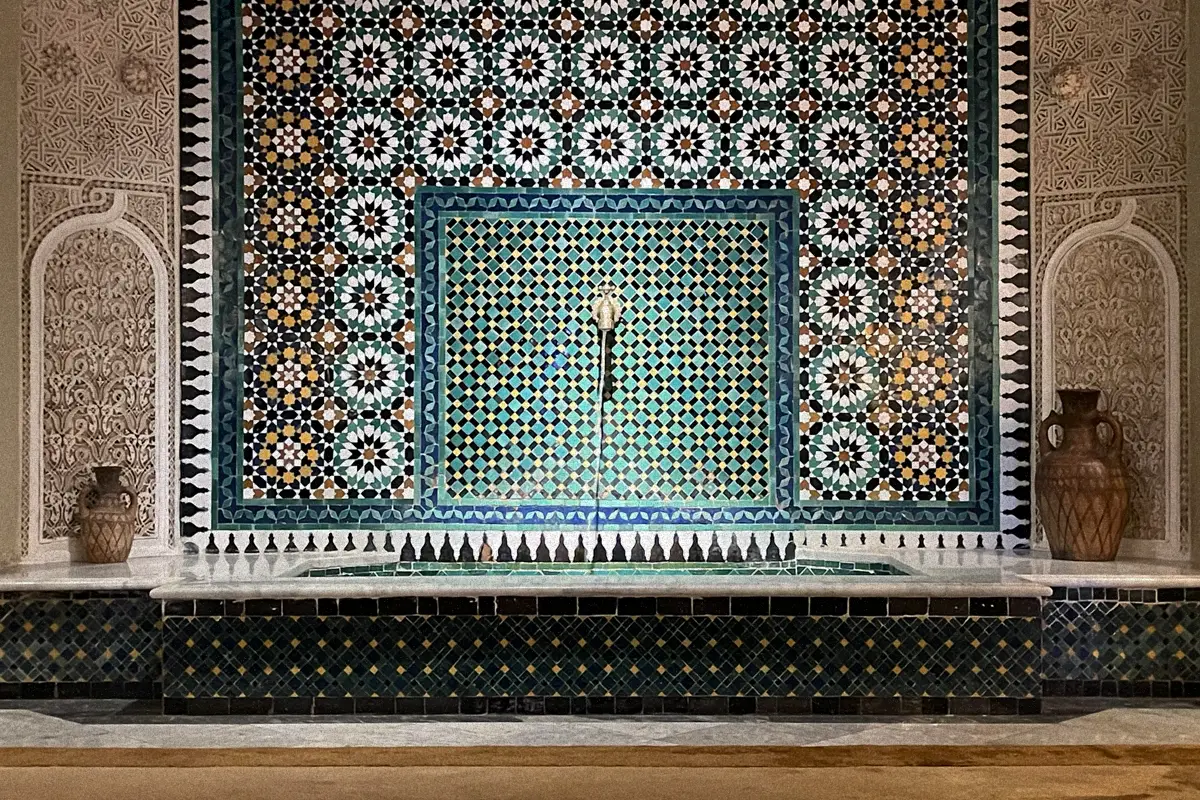
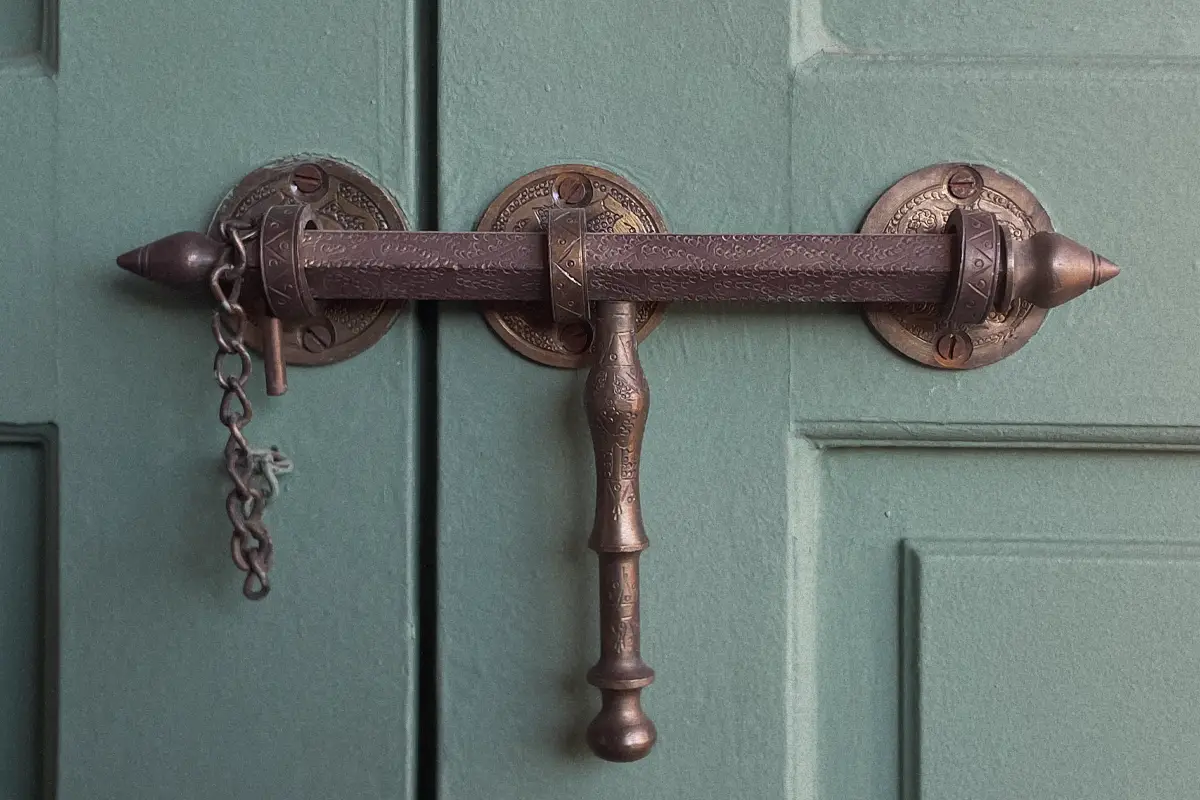
An eight-acre Arsat garden: La Mamounia
La Mamounia stands in the middle of an eight-acre Arsat garden. The term was coined in the nineteenth century by Moroccan writer and Islamic scholar Hocine El Yamani to define the tradition of cultivating and transforming urban spaces into botanical gardens, which first started under the rule of the Alaouite dynasty.
The Arsat gardens played a role in Moroccan culture for many centuries, hosting either political debates or the N’zaha, a picnic ritual where families and friends reunited to eat Tanjia (a traditional meat dish), drink tea and sing Marrakshi songs.
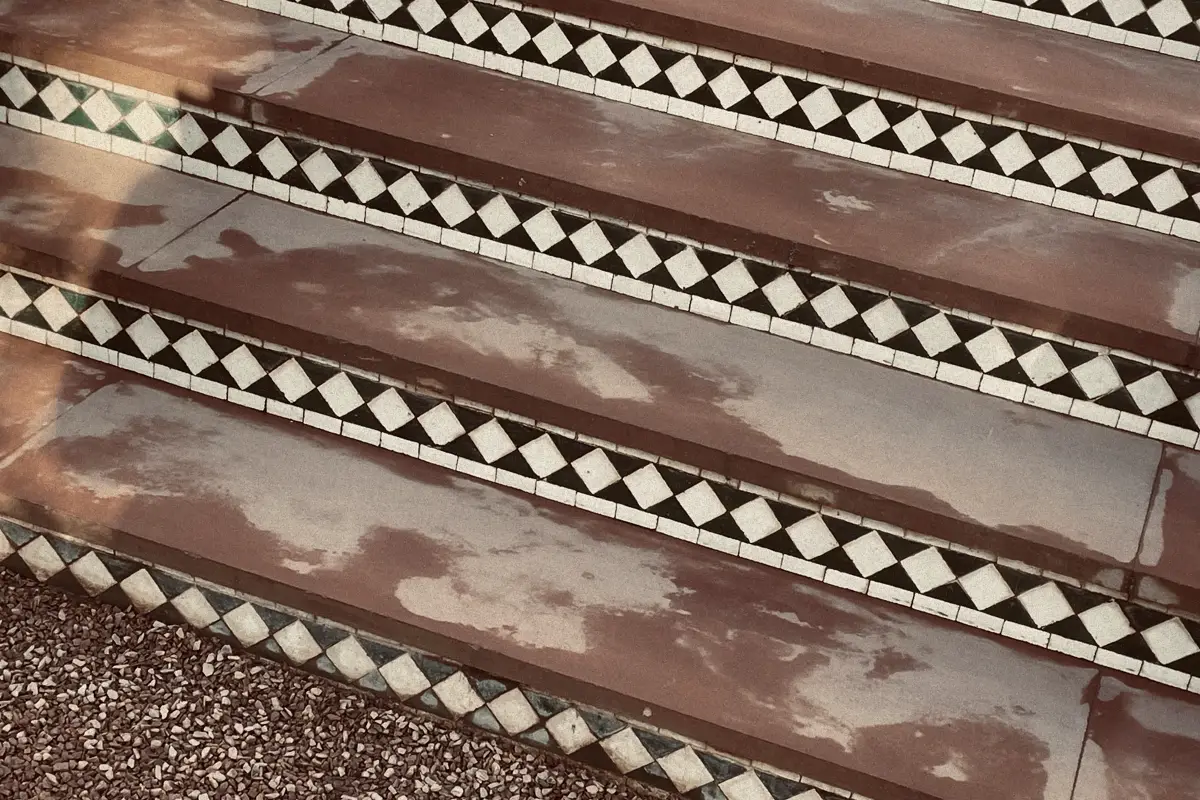
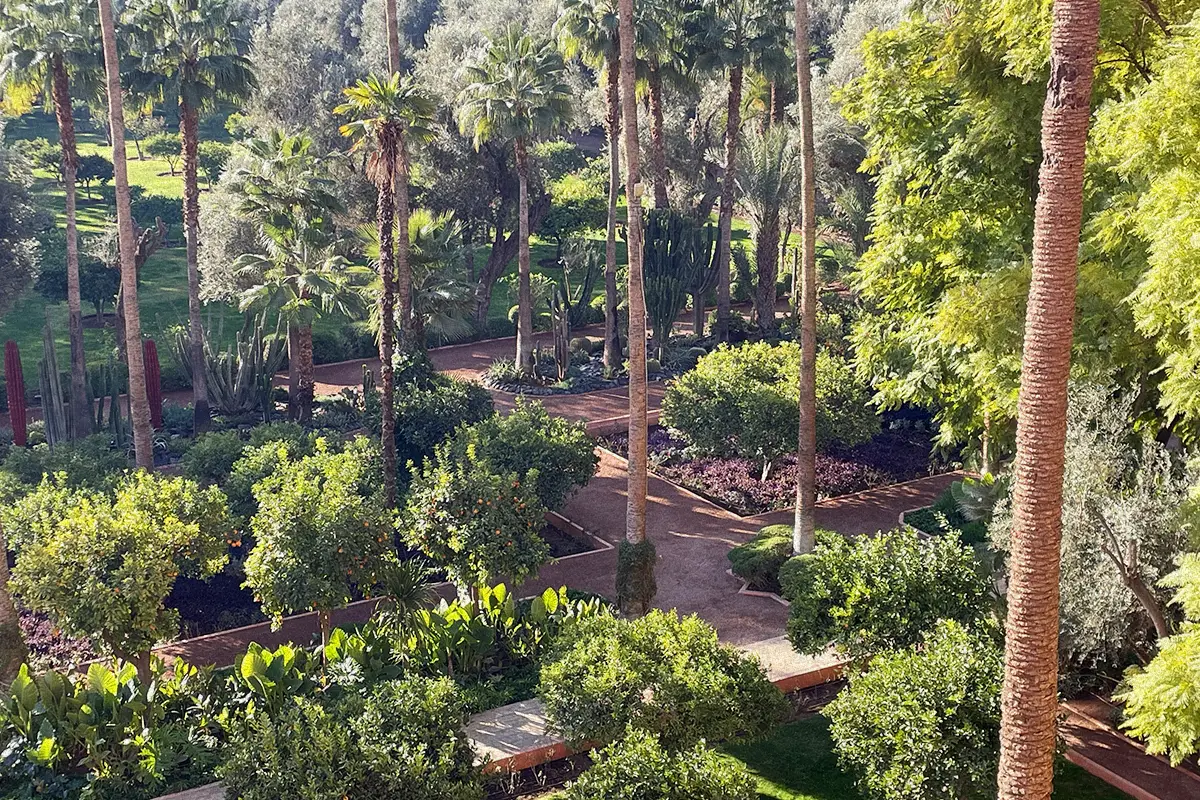
La Mamounia, a historical review: from the Moroccan Railway Company to Winston Churchill
The historical review of La Mamounia dates back to the Eighteenth century, when the Alawite Sultan Sidi Mohammed Ben Abdallah decided to offer an orchard as a wedding gift to his son Mamoun, who later turned it into a leisure venue for garden parties. Two centuries later, in 1923, the Moroccan Railway Company decided to build a hotel on the site and entrusted the work to French architects Henri Prost and Antoine Marchisio, who in their project mixed the ancestral codes of Moroccan architecture with the Art-deco style in vogue in Europe at the time.
La Mamounia became popular, counting among its guests Winston Churchill, whose name was afterwards given to the suite where he used to spend his winter holidays and to one of the hotel bars, where today champagne and spirits are served along with smoked fish and caviar in a British-inspired environment.

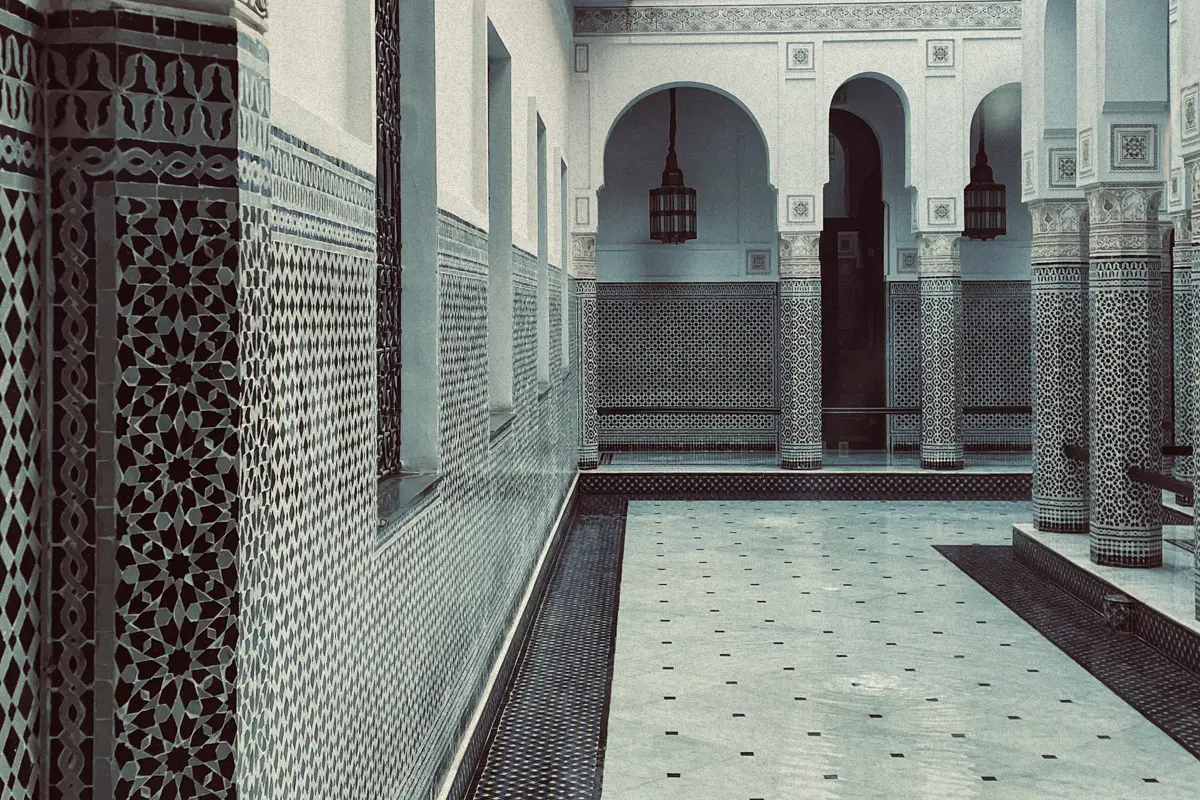
The 1946 renovation: Jacques Majorelle and Mamunia by Paul McCartney
In 1946 the hotel underwent a renovation, which increased the number of rooms and involved French orientalist painter Jacques Majorelle, after whom another of the hotel bars was named, nowadays serving a selection of revisited classics from the Parisian cafés.
Afterwards, the hotel became a destination for personalities from the French and American film industry. The review should list: Charlie Chaplin, Marcello Mastroianni, Claude Lelouch, Francis Ford Coppola. The property even appeared in some scenes in Alfred Hitchcock’s The Man Who Knew Too Much. Not only film stars were among the habitués of La Mamounia: Yves Saint-Laurent, Theodore Roosevelt, The Rolling Stones and Paul McCartney, who wrote a song entitled Mamunia.
La Mamounia: French architectural agency Jouin Manku
Between 2006 and 2009 the hotel was revamped by French architect and interior designer Jacques Garcia. Determined to reground La Mamounia in its Arabo-Andalusian architectural heritage, he worked with local artists and craftsmen, giving the palace a new view over a palm grove and a millenary olive grove, and reworking the lighting with a chiaroscuro effect. La Mamounia owes its current appearance to French architectural agency Jouin Manku, which redesigned the palace in 2020.

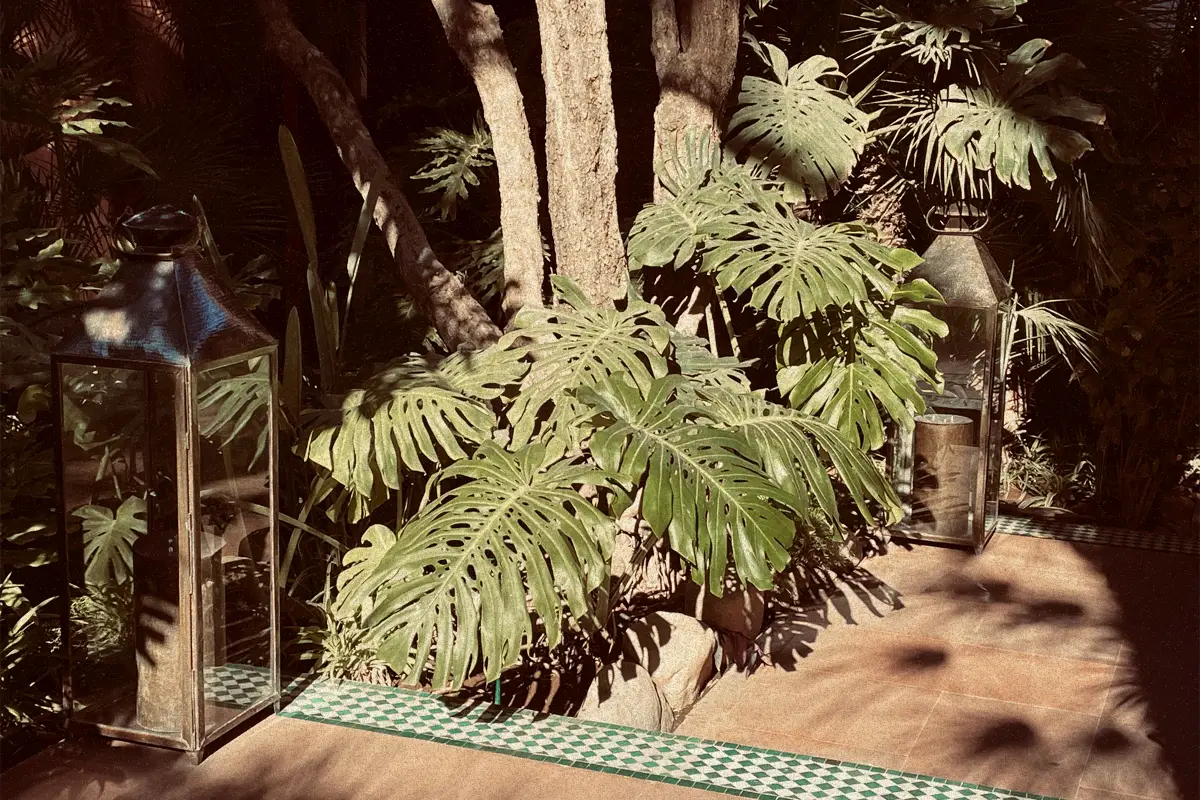
Review, La Mamounia, : a modern reinterpretation of Moroccan heritage
La Mamounia has always been committed to preserving its local heritage, thus trying to balance the need for innovation required by its guests and the wish to keep its Moroccan soul alive. La Mamounia represents Morocco on an international scale. The landmark is a cultural review. Whether it is for a renovation or everyday life, La Mamounia calls upon the Marrakchi population’s expertise. The hotel has been a driving force in the city.
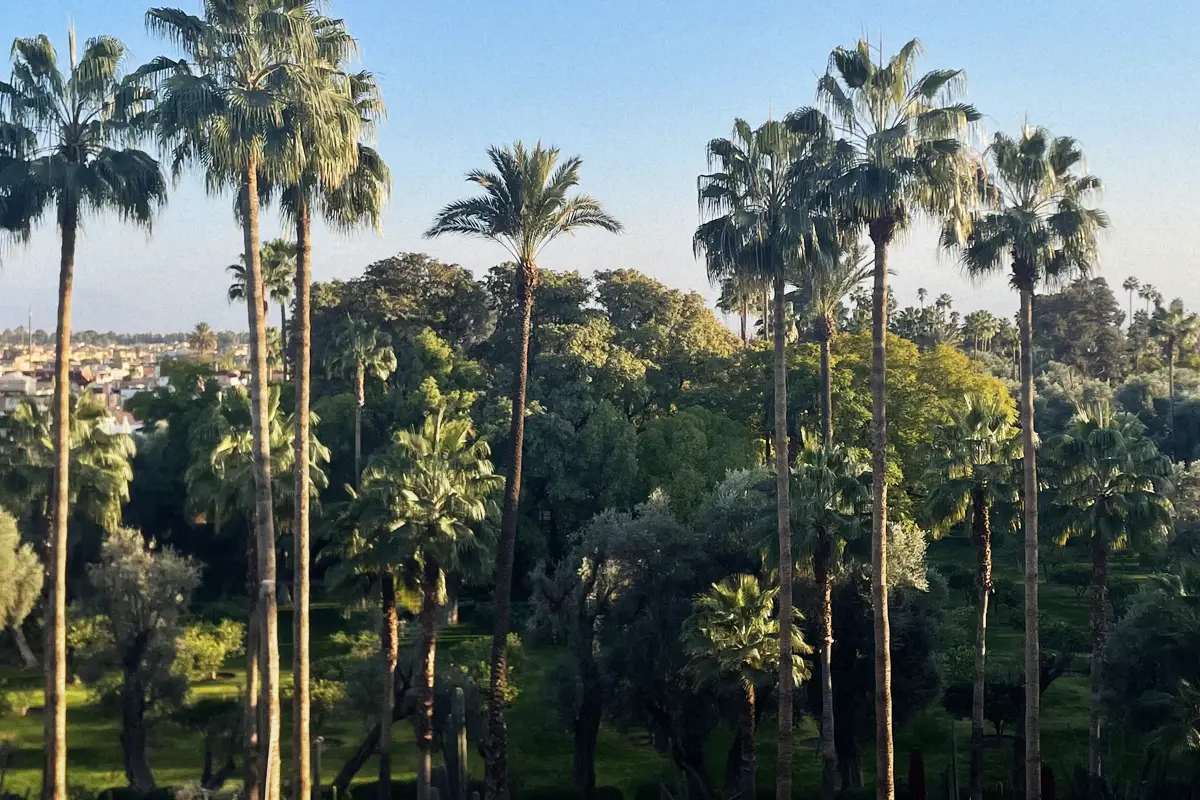
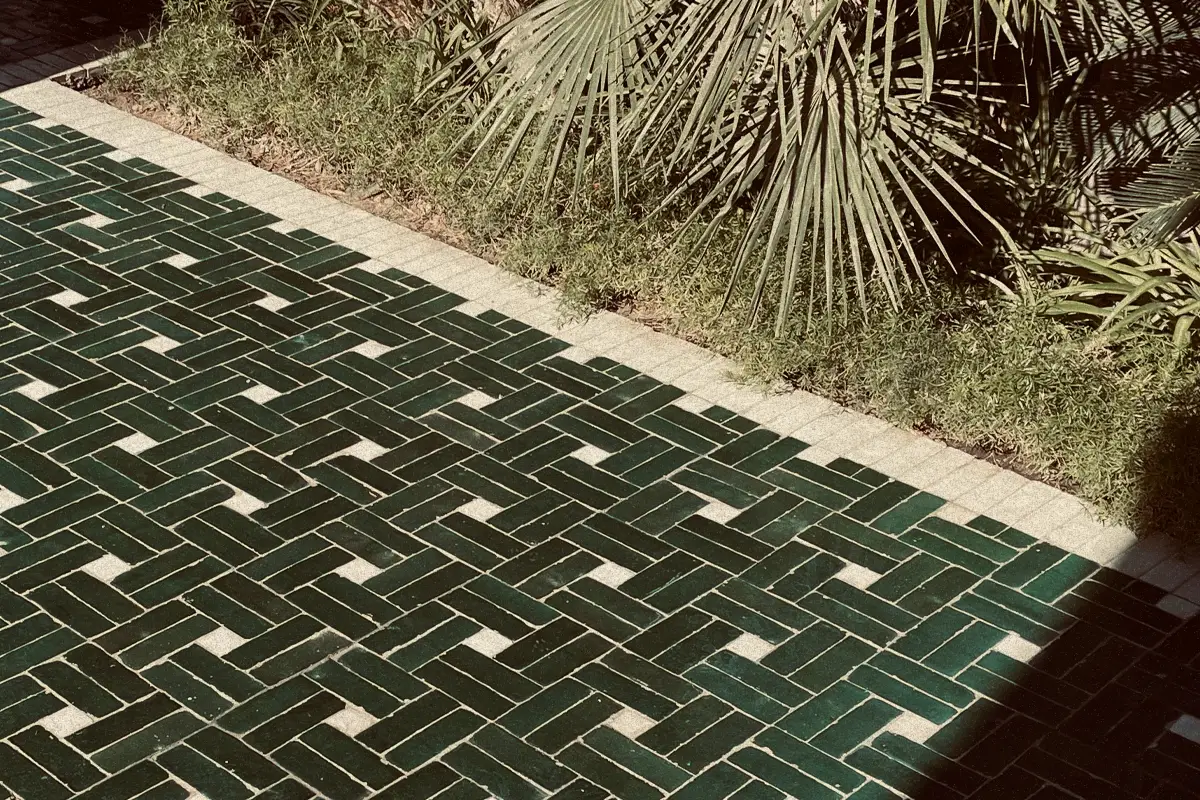
La Mamounia, Marrakech
Avenue Bab Jdid, Marrakech 40040, Morocco. La Mamounia (Avenue Bab Jdid, Marrakech 40040, Morocco) is a historic five-star hotel surrounded by an eight-acre garden, which features one hundred and thirty-five rooms, seventy-one suites, three riads, four restaurants, four bars, two tea rooms, an outdoor swimming pool, a spa, a games room, a cinema, a gym, two tennis courts, a hairdressing and beauty salon, conference and reception rooms.
Carlo Mazzoni
In collaboration with Debora Vitulano
